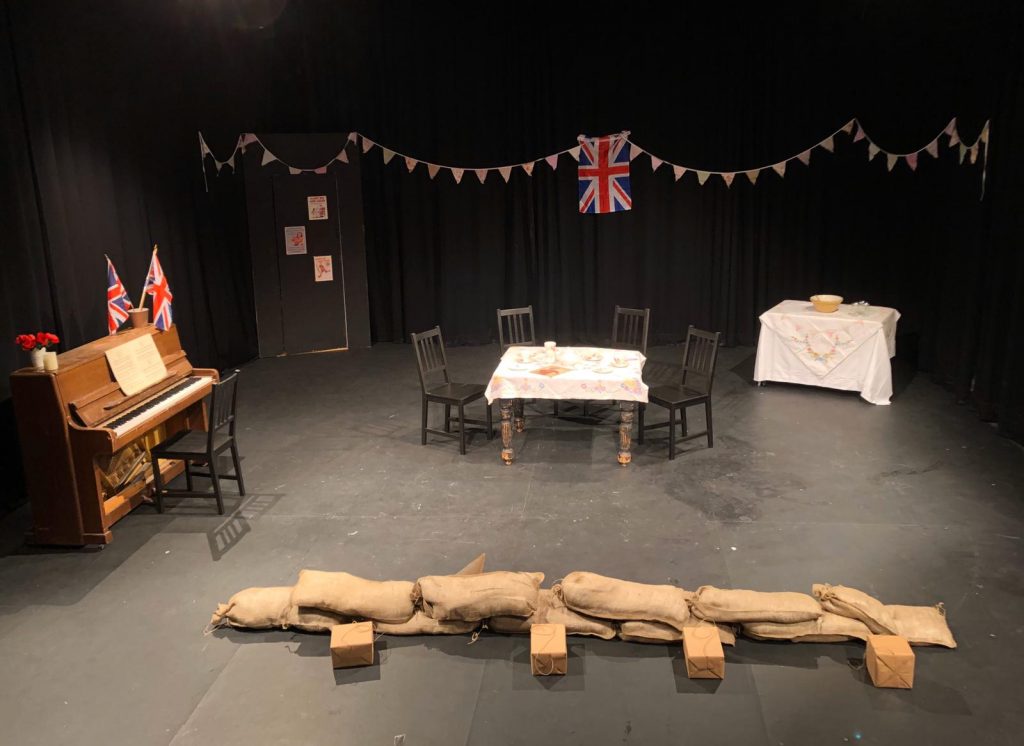
‘Make do and Mend’ was the final show of the Independent Practice as Research project that I completed in my final term at University. It was a devised performance that I both wrote and directed. The performance told the story of four women’s lives during the Second World War, showing the strength of their friendships. This project combined knowledge from all the modules that I have studied across my three years of University. The performance combined moments of comedy, which were created from techniques that I learnt within the module ‘Funny Words’. Furthermore, I was able to create moments of poignancy from the effective techniques taught in the module ‘Artist as Witness’.
This was the first time within a creative process that I had complete control over the direction that the performance was going in. Being both the director and writer, I had to learn how to balance the creativity and the editorial roles. This was the first time that I had taken on such a role within a process, alongside casting the show, it was a large learning curve that I went through. Within the rehearsal process, I found a balance between these roles, one that led me to leading the rehearsals in a very prescribed manner. I ran the first half of the rehearsals as a warm-up with activities that explored themes, potential scenes, and character development. This allowed for a natural creative flow and generation of ideas and conversation to happen. After the rehearsal I then reflected on this and then wrote aspects of script which were to be present to the cast in the second half of the rehearsal. This process was one that took a time to develop however it was extremely effective within my process. It is a structure that I would trial in future rehearsals with different casts that I work with, as I understand that it was a structure that worked with this cast, it might not work with others.
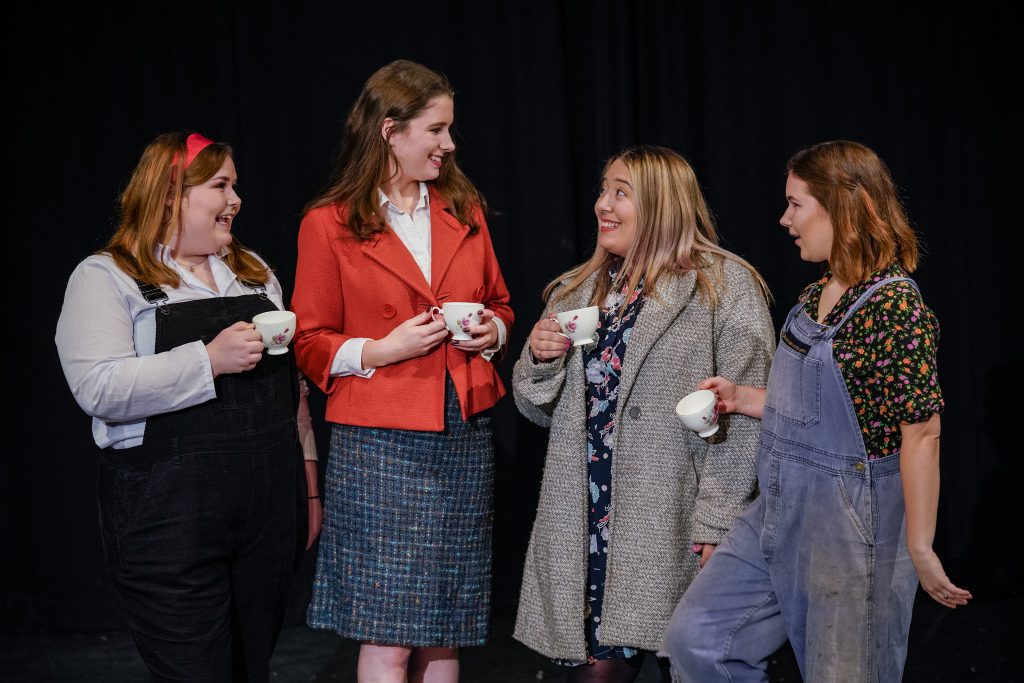
The Original Cast of ‘Make do and Mend’
Whereas this was the final show as part of this module, and I was extremely proud of it; it is not the final product my head. I wish to keep developing the work, re-writing, and re-staging it. All these developments would be responding to personal and written feedback given by both my cast, audiences, and myself.
One major development within the performance is the ability to move the performance from a studio space to alternative venues. The setting of the performance was within a Village Hall, this setting is found in towns across the UK and therefore allows for the performance to be taken on tour. Therefore, this will mean that the performance is in more authentic space on tour than it was in a studio space. In the future I wish start by taking the performance to local Women’s Institute meetings and Trefoil Guild meetings, slowly increasing the radius of the location. By creating links with the local community, it allows for the performance to grow and give back to the generations and organisations who this work was inspired by.
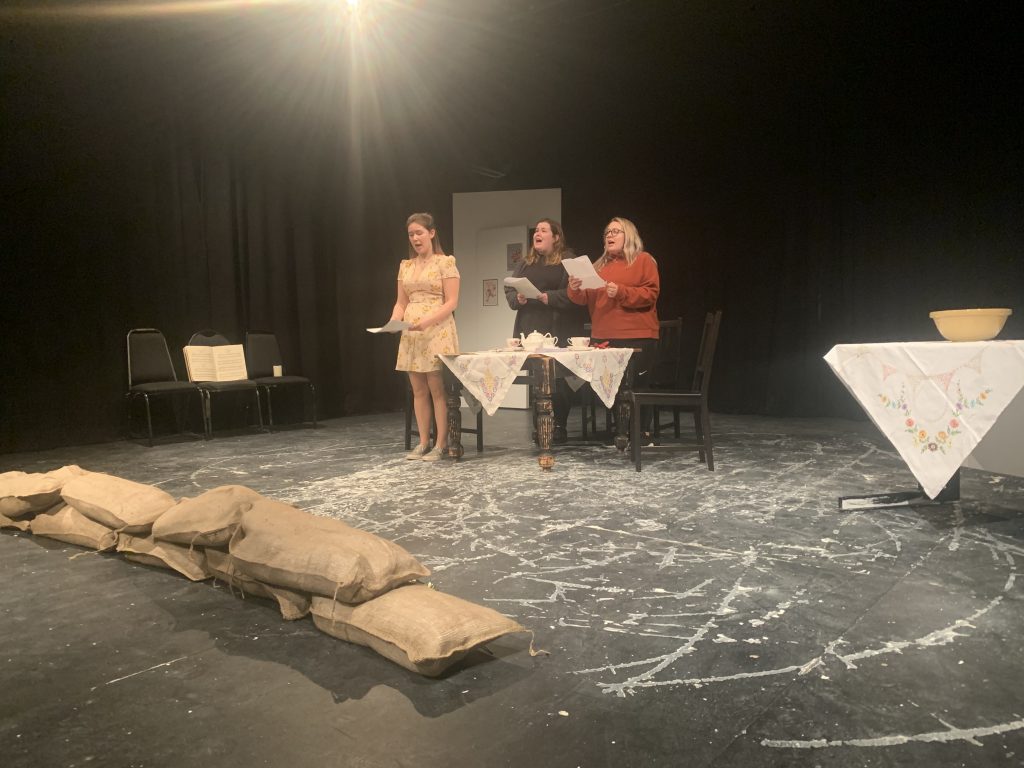
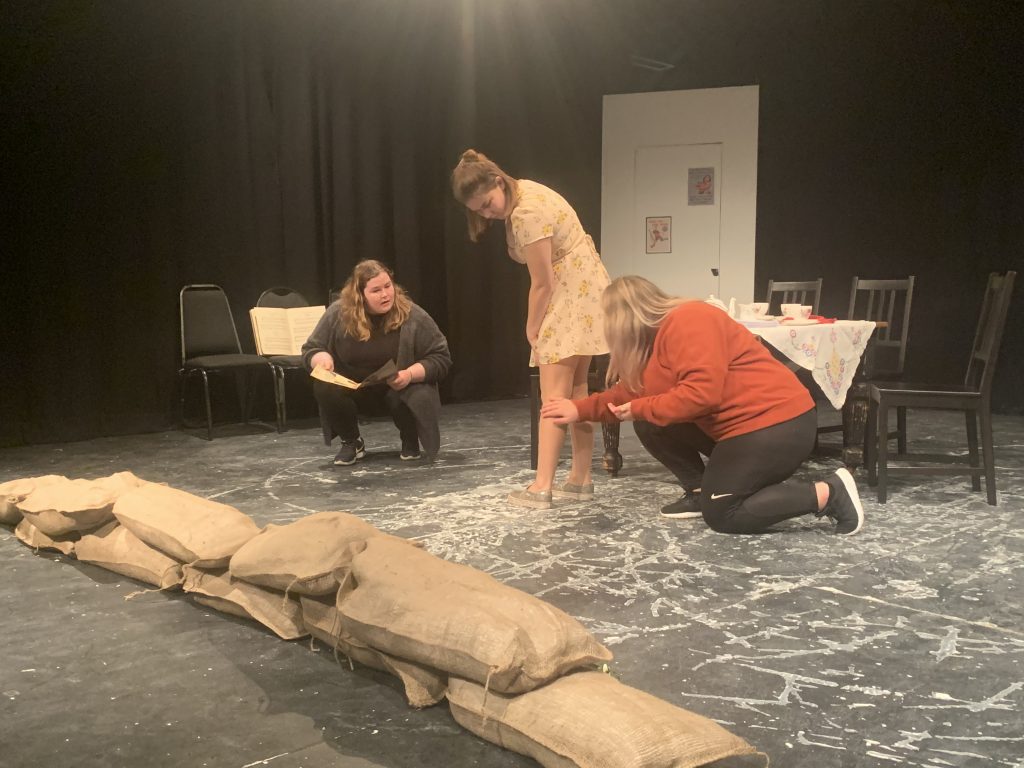
Making gravy stockings 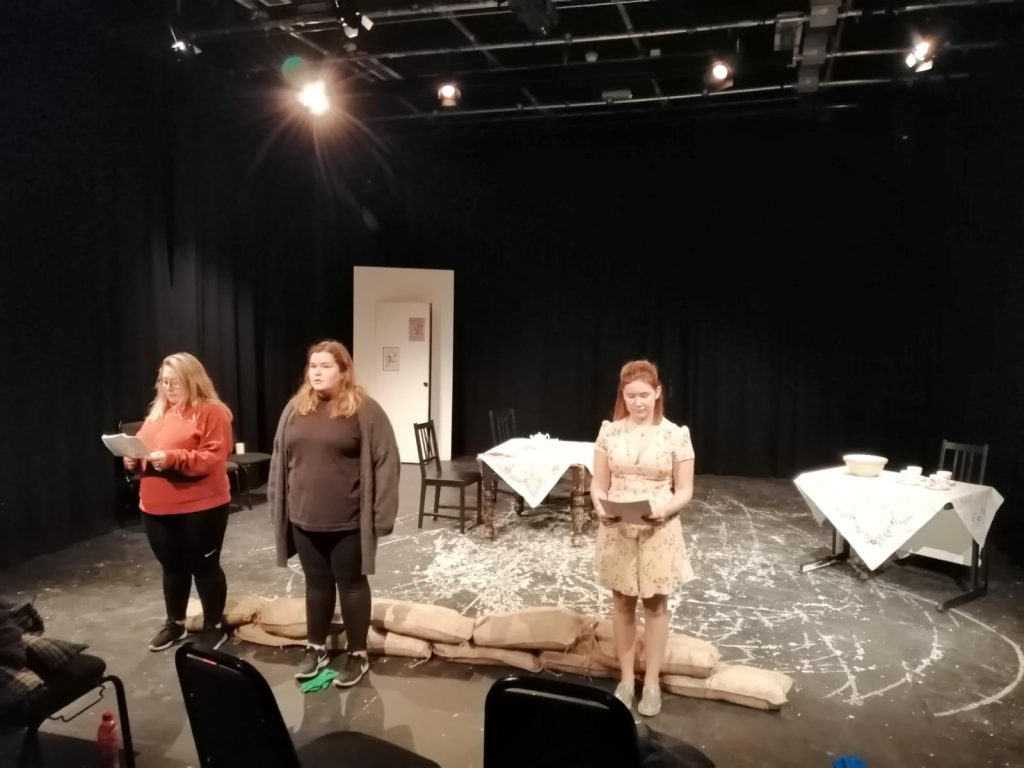
Opening of the Performance 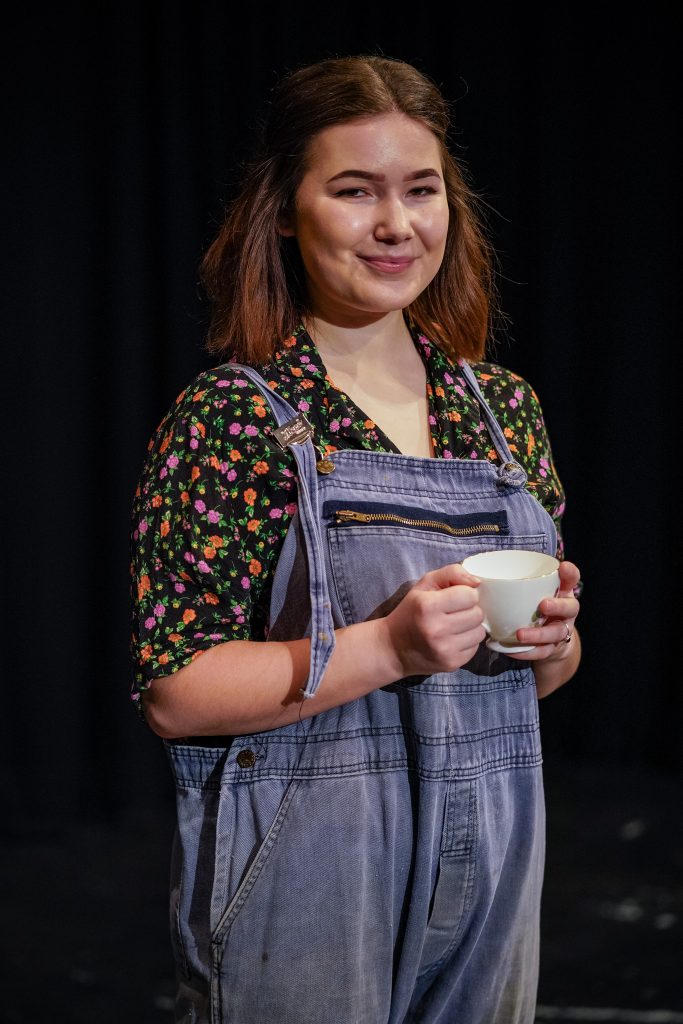
Eliza playing Nancy 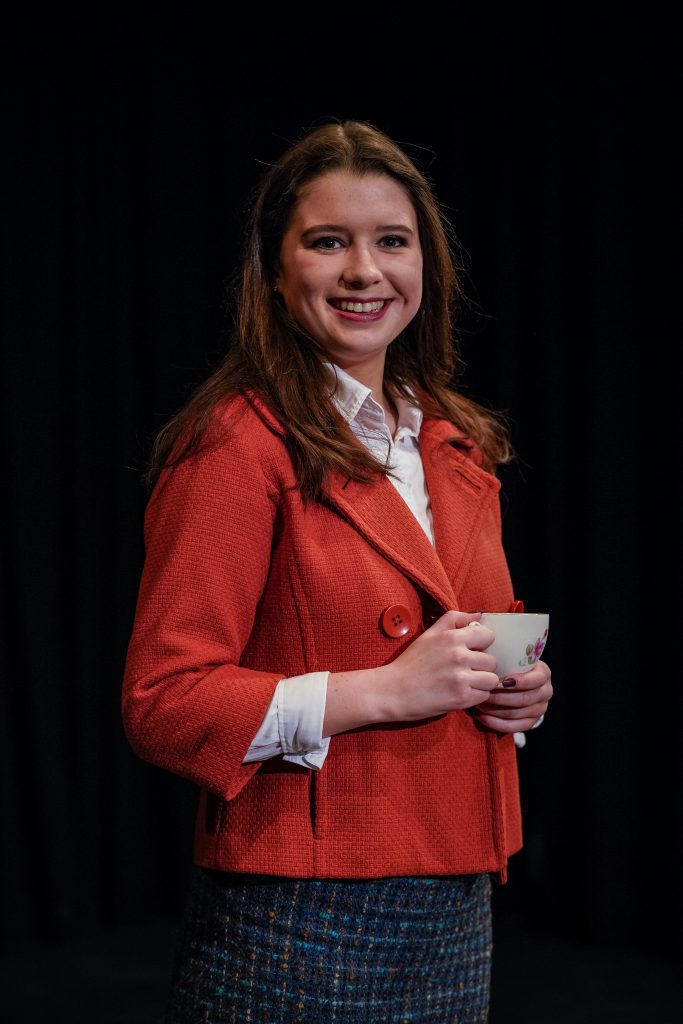
Jasmine playing Vera 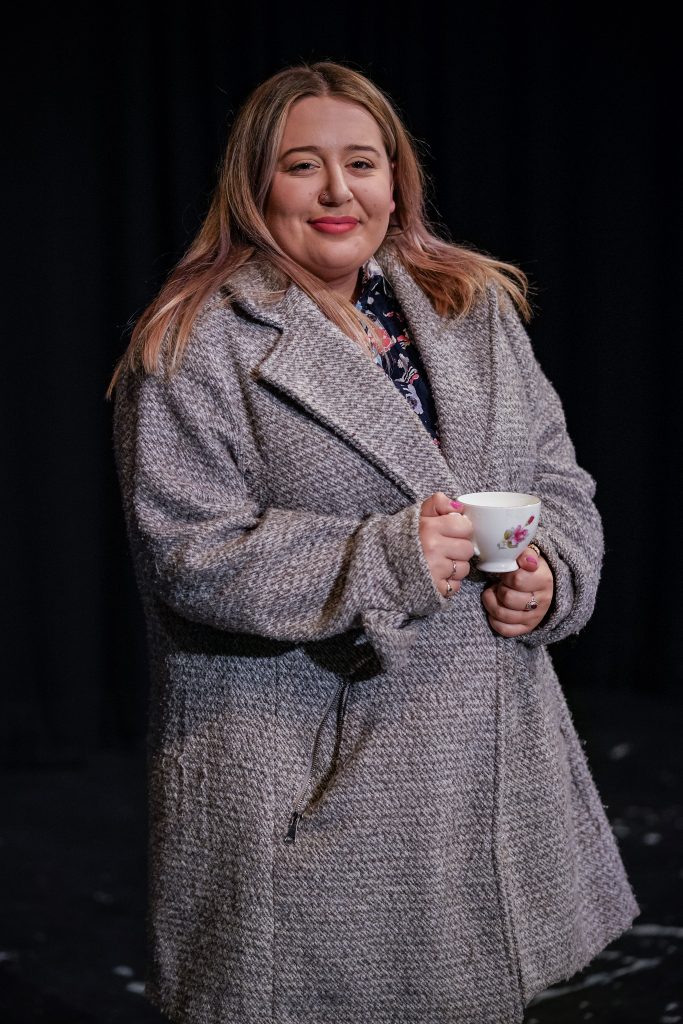
Jasmine playing Judy